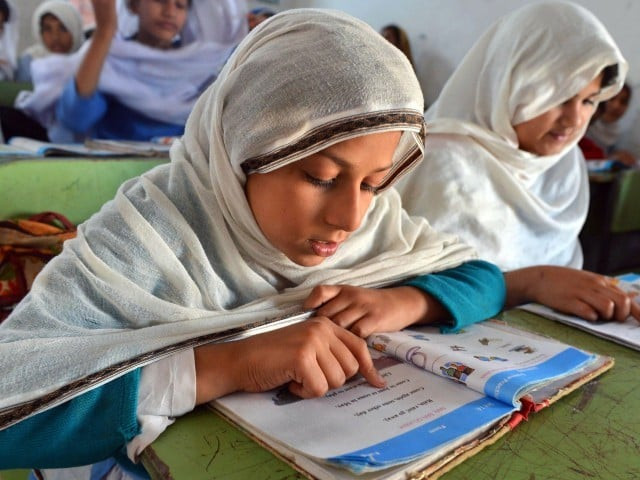In next 15 years: To double women’s income, educate young girls
High adolescent birth rate suggests loss of potential, says UN agency in report

High adolescent birth rate suggests loss of potential, says UN agency in report.
PHOTO: EXPRESS
The UNFPA “State of World Population Report 2016” was launched globally on Thursday. It estimates that there are 192.8 million people living in Pakistan.
This year’s theme of the report is “10: How our common future depends on a girl at this pivotal age”.
Dr Hassan Mohtashami, UNFPA’s country representative, shared key findings of the report and said that 35 per cent of the total population in Pakistan is aged 0-14 years. Of these, around two million are 10-year-old girls.
If Pakistan were to invest and educate this segment of its population today, by 2030 it has the potential to receive high individual returns with the income of each woman expected to rise to $18,773 annually. However, if Pakistan opts not to invest at this point, it would limit the annual income of women to just $8,928.
The significant increase income had the potential of having a far-reaching impact on the country’s economy, he said.
Globally, he said, $21 billion-a-year dividend for developing countries can be unlocked if all 10-year-old girls complete secondary education.
Hampering development
The report said that among the top issues threatening the ambitious development agenda for girls and women was forced marriage, child labour, female genital mutilation, and other practices undermining girls’ health and rights.
In Pakistan, Dr Hassan Mohtashami said that the adolescent birth rate per 1,000 women aged 15-19 was just 44, suggesting a loss of potential.
The report further notes that of the 125 million 10-year-olds around the world today, 60 million are girls are systematically disadvantaged as they move through adolescence into adulthood.
Girls, the report said, are less likely than boys to complete formal schooling at the secondary and university levels, are more likely to be in poorer physical and mental health, and will find it harder to get paying jobs.
Practices that harm girls and violate their human rights--starting at age 10--prevent them from realising their full potential as adults and from contributing to the economic and social progress of their communities and nations.
Without their contribution, the UN agenda 2030 for Sustainable Development and its accompanying 17 Sustainable Development Goals (SDGs) may never be achieved, it says.
“Impeding a girl’s safe, healthy path through adolescence to a productive and autonomous adulthood is a violation of her rights,” UNFPA Executive Director Dr Babatunde Osotimehin says in the report. “But it also takes a toll on her community and nation. Whenever a girl’s potential goes unrealised, we all lose.”
The report recommends banning harmful practices, such as child marriage and providing cash transfers to parents of girls in poor households to help defray costs of schooling, and, thus keep girls in school longer.
It also suggests the provision of life-skills training and comprehensive age-appropriate sexuality education to girls approaching puberty.
Published in The Express Tribune, October 21st, 2016.



















COMMENTS
Comments are moderated and generally will be posted if they are on-topic and not abusive.
For more information, please see our Comments FAQ